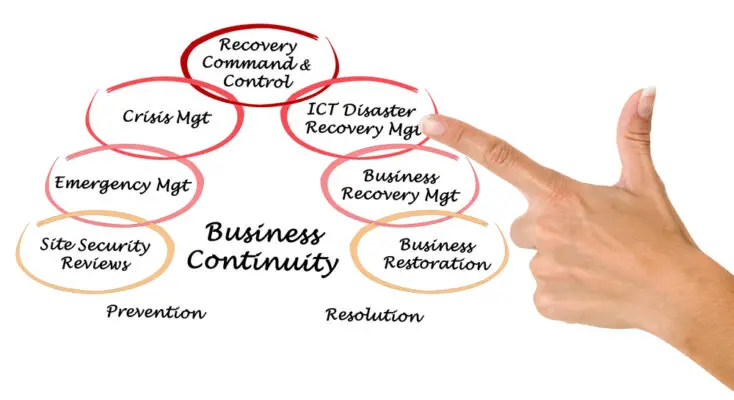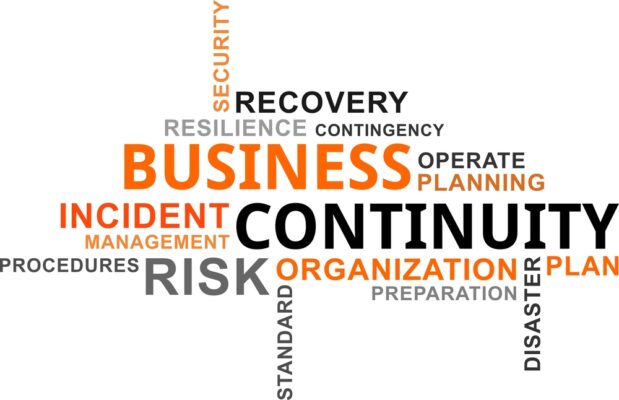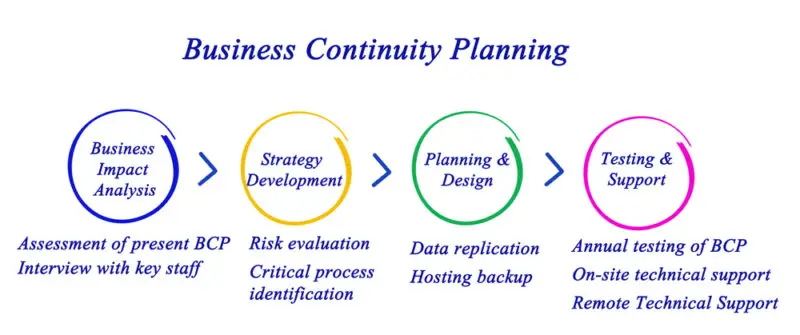A contingency plan is a proactive approach to risk management that enables businesses to identify potential threats and develop strategies to mitigate their impact. It involves assessing various scenarios and developing response plans that can be implemented quickly and effectively in case of an emergency.
Contingency planning is an essential aspect of business management that involves preparing for unexpected events or circumstances that could disrupt normal operations.
According to a recent survey by the Business Continuity Institute, 76% of organizations experienced at least one major disruption in the past year, highlighting the importance of having a contingency plan in place.
A well-designed contingency plan can help businesses minimize downtime, reduce financial losses, and maintain customer trust during times of crisis.
In this article, we will explore what a contingency plan is in business, why it is important, and how to develop an effective plan for your organization.

Understanding the Need for Contingency Planning in Business
Contingency planning also refers to the process of developing backup plans or alternative courses of action that can be implemented when unforeseen circumstances arise.
When an organization has a well-designed contingency plan in place, it can mitigate risks and ensure business continuity, even during challenging times. One significant benefit of contingency planning is that it helps organizations minimize potential losses resulting from unforeseen events.
For instance, natural disasters, cyber-attacks, economic downturns, and pandemics are just some examples that can significantly disrupt business operations.
However, with a contingency plan in place, companies will have pre-determined strategies to follow to help them recover as quickly as possible. Furthermore, businesses that have successfully implemented contingency plans often have a competitive advantage over those without one.
There are many examples of successful contingency plans across various industries and sectors globally.
One such example is Apple Inc., which had developed a pandemic response plan years before COVID-19 struck. The company was able to respond quickly by closing its stores worldwide while still maintaining online sales channels until conditions improved sufficiently for physical store reopenings safely.
Another example would be Coca-Cola’s ‘Project Nadeshiko,’ which was launched during the 2011 earthquake and tsunami crisis in Japan. The project aimed at ensuring timely delivery of products to areas affected by disaster using various transportation modes such as bikes and boats when roads were impassable.
These examples demonstrate how effective contingency planning can positively impact organizational resilience and sustainability over time without compromising profitability or reputation through proactive preparedness measures rather than reactive responses alone.
Identifying Potential Risks and Threats
According to a study, about 60% of businesses fail within six months after experiencing a major disruption. Therefore, it is essential for organizations to conduct a risk assessment that identifies all possible risks and threats.
Risk assessment involves examining various factors such as internal and external environments, organizational culture, financial stability, supply chain management, and legal compliance.
Once potential risks are identified, mitigation strategies can be developed to reduce their impact. These strategies may include creating redundancies in critical systems and processes or developing backup plans that ensure the organization can continue operating during an emergency.
Organizations should not wait until a crisis occurs before conducting a risk assessment. Instead, they should incorporate this practice into their regular business operations. By doing so, they will be better prepared to handle unexpected events that could threaten their survival.
Investing time and resources into identifying potential risks and developing mitigation strategies is an investment in the long-term success of any organization.

Developing an Effective Contingency Plan
In order to ensure the continuity of operations during unforeseen events, organizations must develop a comprehensive strategy that outlines specific actions and protocols to mitigate the effects of disruptions.
A contingency plan is a proactive approach that helps businesses prepare for potential risks or threats that could negatively impact their operations.
Risk assessment is a crucial aspect of developing a contingency plan. Businesses need to identify all possible risks and threats that may affect their operations, including natural disasters, cyber-attacks, economic downturns, or supply chain disruptions.
Assessing these risks, organizations can prioritize which ones require immediate attention and create strategies to mitigate their impact.
Crisis management is another essential component of an effective contingency plan. Businesses need to have clear procedures in place for handling emergencies and minimizing damage caused by disruptions.
These procedures should include communication plans with stakeholders, backup systems for critical infrastructure, and employee training on crisis response protocols.
Through the proactive preparation for potential crises and having a well-defined crisis management process in place, businesses can better protect themselves from negative impacts caused by unexpected events such as natural disasters or pandemics.
Overall, developing an effective contingency plan involves risk assessment and crisis management strategies aimed at mitigating the effects of unforeseen events on business operations. While no one knows what the future holds, having a solid contingency plan in place can help businesses navigate any challenges they may face while ensuring their continued success over time.
Implementing and Testing Your Plan
Once you have developed a contingency plan, it is crucial to put it into action and evaluate its effectiveness regularly.
Evaluation techniques such as simulation exercises or tabletop drills can help identify weak points in the plan and allow for adjustments to be made before an actual crisis occurs.
Effective communication strategies are also vital when implementing a contingency plan. All stakeholders should be informed of their roles and responsibilities during times of disruption, to employees, customers, suppliers, and partners.
A clear line of communication should be established between all parties involved to ensure timely responses and minimize confusion.
Testing your plan can help build confidence within the organization that you are prepared for any potential disruptions. Regularly reviewing your contingency plan ensures that it remains up-to-date with evolving risks and business needs.
Consequently, With an effective implementation strategy in place, organizations can reduce the impact of unexpected events on their operations while maintaining continuity in their services or products offered.
Adapting and Updating Your Plan Over Time
Maintaining operational efficiency in the face of unforeseen events requires a proactive approach to risk management, necessitating regular adaptation and updates to ensure continued effectiveness.
In this regard, businesses need to adopt a continuous improvement mindset that recognizes the need for flexibility in their approach.
This means constantly reviewing and updating contingency plans based on changes in internal and external factors that may impact business operations. To effectively adapt and update their contingency plans, businesses should first establish clear lines of communication among key stakeholders responsible for managing risks.
This includes setting up regular meetings or check-ins to discuss any new developments or potential threats that could affect the business. Additionally, it is essential to conduct regular risk assessments that take into account both internal and external factors impacting the organization’s ability to operate smoothly.
Finally, businesses must also be prepared to be agile in their response when faced with unexpected events or crises. This requires having a flexible organizational structure capable of quickly adjusting resources as needed, as well as establishing clear protocols for decision-making during times of uncertainty.
Through the adoption of an approach focused on continuous improvement and remaining flexible in their response, businesses can increase their resilience against unforeseen events while maintaining operational efficiency over time.
– Regularly review and update contingency plans based on changes in internal and external factors.
– Establish clear lines of communication among key stakeholders responsible for managing risks.
– Be prepared to be agile in your response when faced with unexpected events or crises.

Frequently Asked Questions
How often should a business update its contingency plan?
Organizations must continuously evaluate their plans and assess any potential risks that may arise over time.
Regular reviews help to ensure that the plan remains relevant and up-to-date with the changing needs of the organization.
Moreover, it allows businesses to adapt to new challenges, thereby increasing their resilience against unforeseen events.
Benefits of adaptation include improved decision-making, increased employee confidence, and reduced downtime during disruptions.
Therefore, updating contingency plans regularly can be beneficial for organizations in terms of operational efficiency and successful disaster recovery.
What are the consequences of not having a contingency plan in place?
One of the most obvious is lost opportunities, as unforeseen events can disrupt operations and prevent companies from capitalizing on emerging trends or responding to market shifts.
Additionally, reputational damage can occur if customers or stakeholders perceive that a business was unprepared for a crisis or failed to take appropriate action to mitigate its impact. This can result in long-term damage to brand equity and customer loyalty, affecting both current and future revenue streams.
To avoid these potential pitfalls, it is crucial for businesses to develop and regularly update comprehensive contingency plans that anticipate various scenarios and outline clear protocols for response.
How can a business determine the financial impact of a potential crisis?
Financial forecasting and risk assessment are crucial components of a business’s planning process. In order to determine the financial impact of a potential crisis, businesses must engage in a thorough analysis of their current financial situation and projected future earnings.
This analysis involves examining various scenarios that could potentially arise, such as natural disasters or economic downturns, and estimating the potential costs associated with each scenario. Through this process, businesses can develop contingency plans that allocate resources appropriately in the event of a crisis.
Who should be involved in the development of a contingency plan?
Key stakeholders play a crucial role in the development of a contingency plan. These stakeholders may include top-level executives, department heads, and other personnel who are responsible for managing critical operations within the organization.
In addition to internal stakeholders, external consultants may also be involved in the development of a contingency plan. Such consultants can provide valuable insights and expertise that can help organizations address potential risks and threats effectively.
Can a contingency plan be developed for every possible scenario or risk?
Contingency planning is an important process for any organization to identify potential risks and develop strategies to mitigate them.
However, it is not feasible to develop a contingency plan for every possible scenario or risk.
There are limitations to the effectiveness of contingency plans due to factors such as the unpredictable nature of certain events, lack of resources, and the complexity of some risks.
Additionally, the level of uncertainty associated with a particular risk can affect the development and implementation of a contingency plan.
Therefore, while developing a contingency plan is crucial for effective risk management, it is essential to recognize its limitations and consider other forms of risk management in tandem with contingency planning.

Conclusion
Contingency planning is an essential aspect of business management that helps organizations to prepare for unforeseen events and minimize their impact on operations.
To develop an effective contingency plan, it is important to identify potential risks and threats that may affect your business, such as natural disasters, cyber-attacks, supply chain disruptions, or economic downturns.
A well-designed contingency plan should include clear procedures for responding to different scenarios, such as evacuation plans, communication protocols, backup systems, security measures, and crisis management strategies. It should also involve regular testing and training exercises to ensure that all stakeholders understand their roles and responsibilities in case of an emergency.
Finally, it is crucial to adapt and update your plan over time based on new information or changes in the business environment.
According to a recent survey by PwC (2020), only 44% of companies have a formal contingency plan in place for crises like COVID-19. This highlights the need for more proactive measures in risk management and preparedness among businesses worldwide.
Furthermore, Investing in contingency planning early on and continuously refining it over time, organizations can improve their resilience against unexpected events and protect their employees’ safety while maintaining the continuity of operations.

Chris Ekai is a Risk Management expert with over 10 years of experience in the field. He has a Master’s(MSc) degree in Risk Management from University of Portsmouth and is a CPA and Finance professional. He currently works as a Content Manager at Risk Publishing, writing about Enterprise Risk Management, Business Continuity Management and Project Management.

